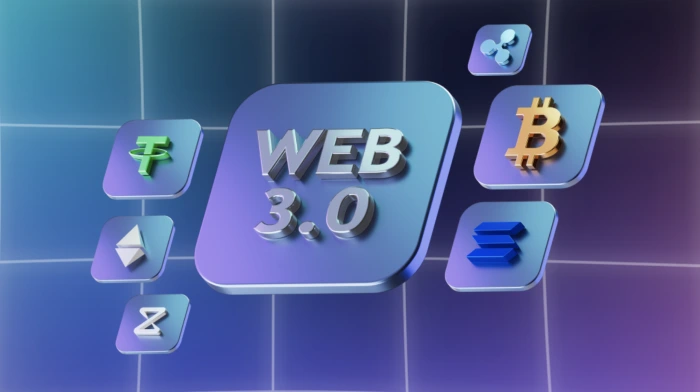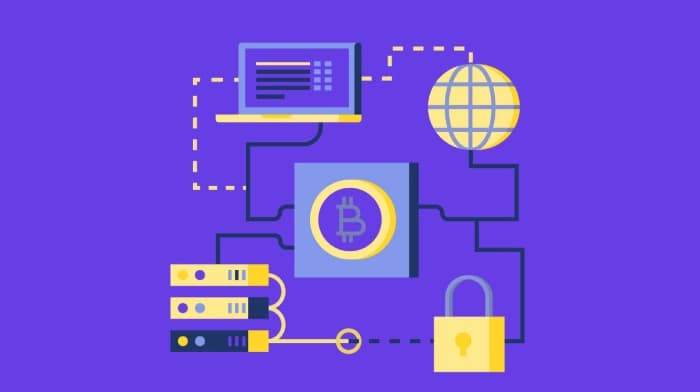
Introduction
The concept of Web 3.0 is built around the idea of decentralization, where data is spread out and not controlled by a single entity. Blockchain technology plays a crucial part in making this vision a reality.
By allowing information to be stored and shared in a transparent way, blockchain gives Web 3.0 its foundation. Web 3.0 development in turn relies heavily on this foundation to create types of applications that are more open and community-driven.
Essentially, blockchain's role is to provide a trustless environment, where users can interact without needing a middleman, making it a crucial component in the shift towards Web 3.0.
The Evolution of the Internet
Web 1.0: The Beginning
The internet first emerged back in the 1980s with what's known as Web 1.0. This early phase of the web was pretty basic, with content that couldn't be changed by users. It was essentially a 'read-only' experience.
- A handful of people created most of the content
- It was groundbreaking to have all this information available globally
- Users couldn't really interact with the content in any way
Web 2.0: The Interactive Web
The shift to Web 2.0 was a game changer. It wasn't just about looking at a screen - people could actually do things online.
- Users could sign up for accounts on websites
- People could create their own little corners of the internet
- This had a major impact on shopping and social media
- Important technologies emerged like HTML5, CSS3, and JavaScript
Web 3.0: The Decentralized Web
We're on the verge of a new phase in the development of the internet, something that's been dubbed Web 3.0. This next step is expected to bring significant shifts, and blockchain is set to play a crucial role in shaping the future of the web.
Web 2.0 platforms did make it easier for people to participate in peer-to-peer economies and settle transactions quickly. But there was a downside - they had a lot of power and control over everything.
What is Web 3.0?
Definition and Core Principles
At its core, Web 3.0 is the next generation of internet services built on advanced technologies like:
- Artificial Intelligence
- Internet of Things
- Blockchain technology
This new era of the internet is marked by breakthroughs in areas like AI and machine learning, with a focus on tightening up security.
Key Features of Web 3.0
- Decentralization: No single entity controls the data
- User ownership: Individuals have control over their data
- Transparency: Open and verifiable transactions
- Interoperability: Different systems can work together seamlessly
Web 3.0 Applications and Use Cases
Decentralized Social Networks
Decentralized social networks are made possible by Web 3.0, giving users control over their data and interactions. This approach helps to address concerns about:
- Control of data
- Censorship of content
- User privacy
On these platforms, the power is essentially handed back to the users.
Decentralized Finance (DeFi)
DeFi or Decentralized Finance is one of the most important parts of Web 3.0. It uses blockchain technology and smart contracts to create a financial system that's open and honest.
- People have more say over what happens to their money
- Transactions are transparent and verifiable
- Users maintain control over their assets
Self-Sovereign Identity
The concept of digital identity is taking a new turn with Web 3.0. Now individuals have the power to control their identities thanks to self-sovereign identity solutions.
Benefits include:
- Freedom from centralized authorities
- Greater control over personal data
- Enhanced privacy and security
Supply Chain Transparency
Supply chain transparency is a major benefit of using blockchain and Web 3.0. These technologies make it possible to create supply chain management systems that are tamper-proof.
- Products being tracked can't be counterfeited or altered
- Easier to keep track of where things come from
- Enhanced verification of authenticity
Content Creation and NFTs
Blockchain technology is helping content creators get paid fairly for their work. We're talking about things like art and music, where people can now make money from their creations in ways that weren't possible before.
This is largely thanks to NFTs (Non-Fungible Tokens), which are changing the game when it comes to:
- Owning digital content
- Selling creative works
- Managing intellectual property
How Blockchain Enables Web 3.0
The Foundation: Bitcoin and Early Blockchain
Bitcoin's arrival was a major milestone that helped pave the way for the development of Web 3.0. The blockchain technology that underpins Bitcoin created a network where someone trying to hack in would have to break through multiple locations around the world just to get to a single piece of stored data.
Decentralized Data Storage
Blockchain technology revolutionizes the way we store and manage data. At its core, it's a distributed way of collecting and managing data - a kind of ledger that's maintained by a group rather than a single entity.
Key benefits:
- Enhanced security: Data is distributed across multiple nodes
- Transparency: All transactions are visible and verifiable
- Immutability: Once data is recorded, it cannot be altered
- No single point of failure: System remains operational even if individual nodes fail
Smart Contracts
Smart contracts are basically computer programs that can automatically carry out the terms of a contract or agreement. They make it possible for transactions to happen efficiently and reliably.
Applications include:
- Automated financial transactions
- Supply chain management
- Digital identity verification
- Decentralized applications (DApps)
Consensus Mechanisms
The protocol sets out rules for how the network operates and is designed to keep data secure by getting everyone involved in a consensus mechanism. This means all the people and computers on the network agree on what's happening, which helps keep everything running smoothly.
Digital Identity in Web 3.0
Current Identity Challenges
Websites currently depend a lot on third-party cookies to identify users. This method isn't very reliable and has some security flaws. The way Web 2.0 handles identities - for people, objects, and organizations - just isn't working out.
Blockchain-Based Identity Solutions
Using blockchain for identity management has significant advantages:
- Decentralized storage: Identity data is stored across multiple computers
- User control: Individuals decide who can access their information
- Enhanced security: Strong encryption protects against data breaches
- Universal access: One identity can work across multiple platforms
Did you know? With blockchain, it's possible to create a unique identity for every user. This would essentially make it easier for people to interact with different platforms, simplifying the process.
Blockchain in Marketing and Advertising
Smart Contracts in Marketing
Smart contracts, a key progression of blockchain tech, let people make transactions without needing middlemen. This openness can help prevent disagreements and might just change the way marketing works in the next generation of the web.
Benefits for Digital Advertising
The digital advertising industry is on the verge of a major upheaval courtesy of blockchain technology:
- Access to consumer data: Publishers get better insights for ad campaigns
- Fraud prevention: Immutable ledger records make it harder for scammers
- Transparency: Smart contracts show that advertising operations are above board
- Privacy protection: Blockchain helps keep user data safe by removing identifying information
Healthcare Applications
Secure Data Management
The healthcare industry has seen significant benefits from advancements in enterprise blockchain technology. This has been a game changer in how information gets shared across different parts of the healthcare system.
Smart Contracts in Healthcare
Developing drugs, conducting research, and handling critical aspects of healthcare all rely on having secure contracts in place. Blockchain allows companies to create contracts that can't be altered or tampered with, providing:
- Stability and trust: Unchangeable records
- Reliability: Accurate and verifiable information
- Global access: Easy information sharing worldwide
Real-World Examples
Decentralized Social Protocols
A great example of blockchain's potential in Web 3.0 is platforms like Farcaster - a decentralized autonomous organization that's developed a social protocol that doesn't rely on centralized management.
At the heart of Farcaster's protocol, which is built on blockchain, is a simple yet powerful idea: giving users full control over their online identities and the data they share.
Emerging Applications
Blockchain is being used to cut out middlemen, allowing networks to keep a transparent record of how people interact and what's happened in the past. This is paving the way for a more decentralized internet where power isn't concentrated in the hands of a few large players.
Benefits for Businesses and Individuals
For Businesses
For Individuals
- Data ownership: Users have control over their personal information
- Privacy protection: Better safeguarding of personal data
- Monetization opportunities: Ability to profit from digital activities
- Enhanced security: Stronger protection against identity theft
- Universal access: Single identity across multiple platforms
Business Benefits of Web 3.0 and Blockchain
| Benefit | Description | Impact |
|---|---|---|
| Enhanced Security | Distributed data storage and encryption | Reduced risk of data breaches |
| Lower Transaction Costs | Elimination of intermediaries | Cost savings and efficiency gains |
| New Business Models | Direct peer-to-peer interactions | Innovation opportunities |
| Transparent Operations | Immutable transaction records | Increased trust and accountability |
Challenges and Solutions
Current Obstacles
As things stand, a few key hurdles are holding back widespread adoption:
- Scalability: Blockchain networks need to handle larger volumes of data and transactions
- Energy consumption: Some consensus mechanisms require significant energy
- Regulatory uncertainty: Inconsistent rules and unclear guidelines
- Interoperability: Different blockchain systems have trouble communicating
- User experience: Complex interfaces and technical barriers
Potential Solutions
There are ways to overcome these challenges:
- Layer 2 scaling solutions: Help improve transaction throughput
- Energy-efficient consensus mechanisms: Reduce environmental impact
- Clear regulatory frameworks: Provide certainty for businesses and users
- Standardized protocols: Enable better communication between systems
- Improved user interfaces: Make technology more accessible
Despite these challenges, researchers and developers are actively working on solutions. Education and awareness are key to helping regulators, businesses, and individuals understand both the benefits and risks of blockchain and Web 3.0.
The Future of Web 3.0 and Blockchain
Transformative Potential
Blockchain is really making its mark on the development of Web 3.0. This technology is leading the charge towards a new kind of internet - one that's more decentralized, secure, and focused on the user.
The underlying principles of blockchain - that data can't be tampered with and that transactions can happen without a middleman - have helped create a new kind of web where people have more power over what they share and how they share it.
Long-term Vision
The internet is on the cusp of a fundamental change. Web 3.0 is more than just a technology upgrade - it's a fundamentally different way of thinking about the online world. At its core, it's about giving people control over their digital lives.
Over time, the internet will shift from a centralized system to one that genuinely puts people in the driver's seat, creating a more secure online world where everyone has a fair chance to participate.


